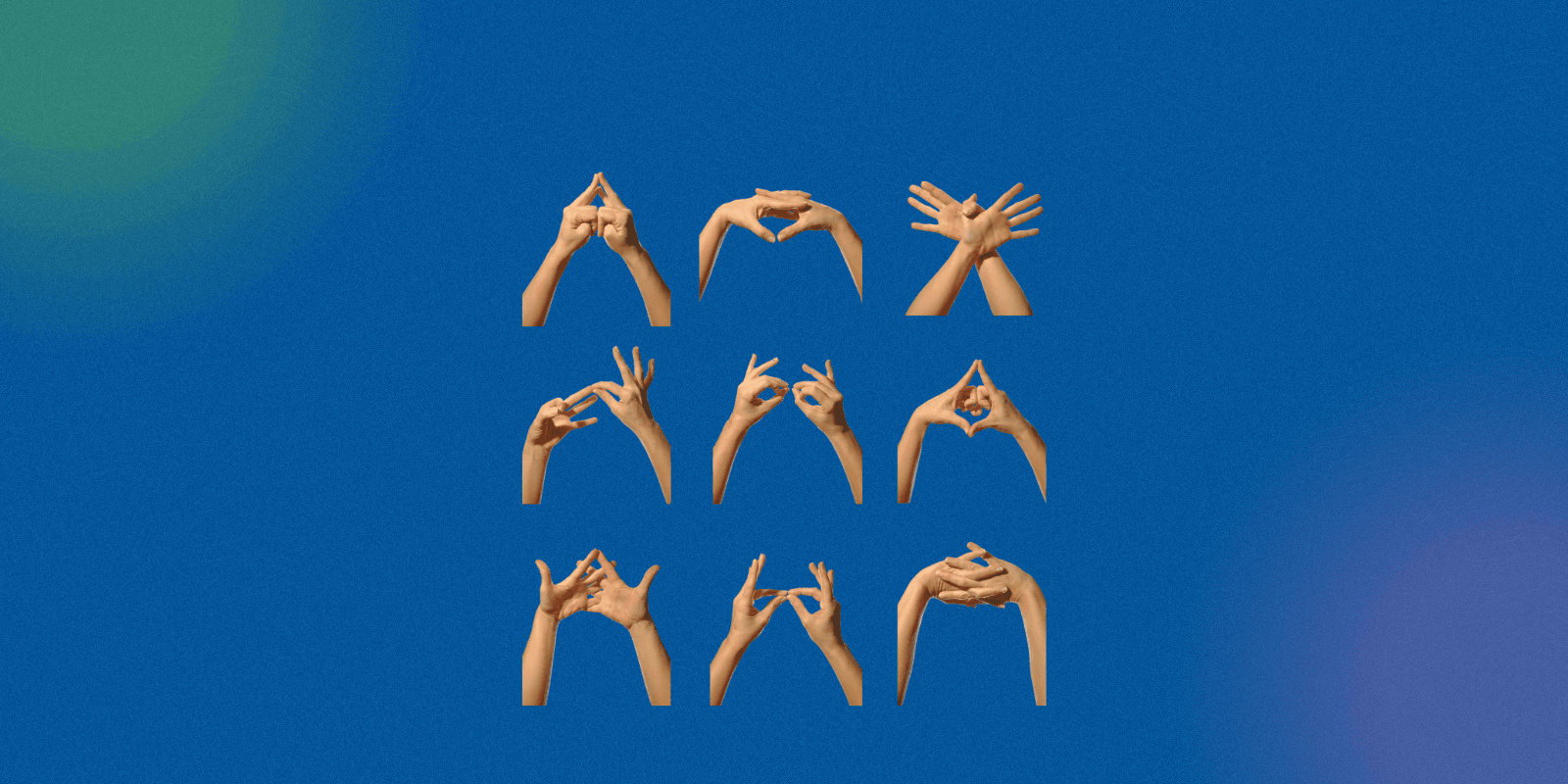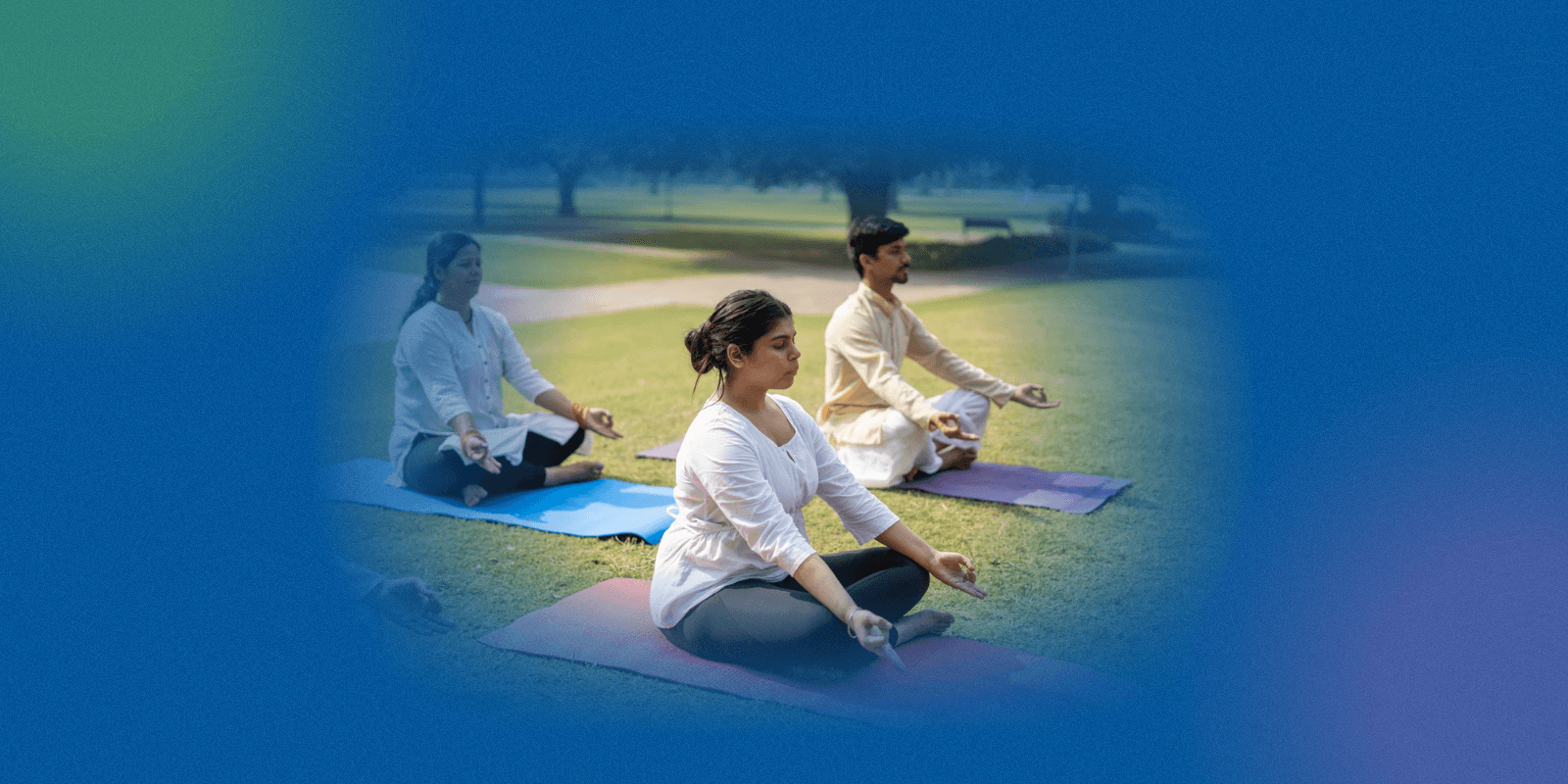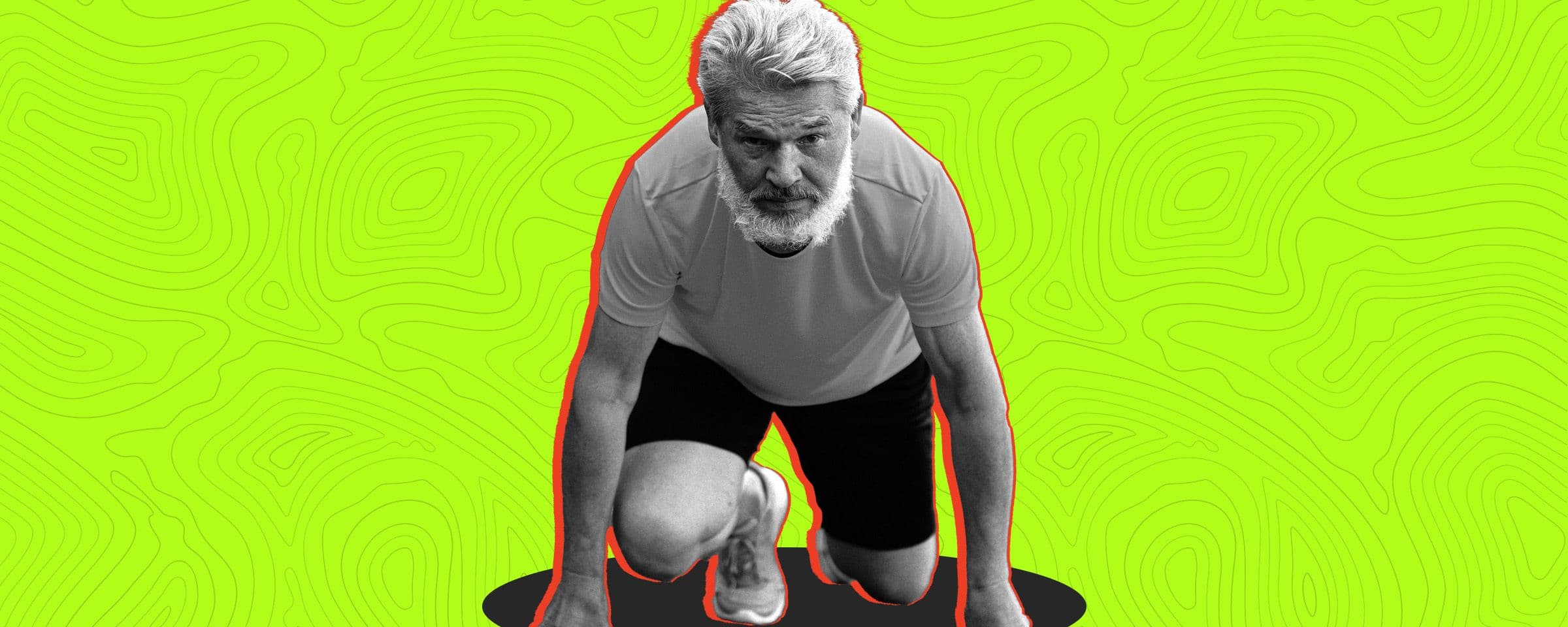The Science Behind Yoga Mudras

Introduction
We see many videos on social media about people performing yoga and mudra, and often wonder if these hand gestures can fix all our issues. From helping you feel energetic and reducing stress to improving digestion and blood circulation, there are many health benefits of yoga and mudras.
Yoga and mudra have their roots deeply embedded in ancient India and are now regaining popularity among urban youth due to their limitless benefits. In fact, many foreigners are also studying yoga and mudra and adapting to the yogic lifestyle, invented by Maharshi Patanjali, the father of yoga.
In this blog, you will understand the science behind yoga and mudra, what a mudra is, the benefits of yoga mudra, types of yoga mudra, how to perform mudra yoga for weight loss, mudra to relieve pain in the leg, and much more.
Yoga Mudras Explained: What is a Mudra and Why Does it Matter?
Derived from the Sanskrit language, the word ‘Mudra’ roughly translates into ‘seal’ or ‘gesture’. Mudras typically involve fingers, hands, and sometimes even the entire body to create specific shapes. These shapes affect the energy flow in our bodies and have a deep symbolic meaning, impacting physical and mental well-being.
The fundamentals and their connection with our fingers
Each finger represents one of the five Ayurvedic elements.
- Thumb: Fire
- Index: Air
- Middle: Ether (space)
- Ring: Earth
- Little Finger: Water
When these fingers are combined in a specific mudra pattern, they subtly regulate the bioelectric and energetic circuits in the body, influencing bodily systems and consciousness.

Types of Yoga Mudras: Exploring Ancient Hand Gestures
Mudras are classified into several categories as follows:
Yogic Mudra
Among the 25 types of yogic mudras, some include: mahamudra, hatha mudra, and chin mudra. Mahamudra is one of the oldest forms of hatha mudra and helps boost mental awareness. Chin mudra is known as the gesture of knowledge.
Spiritual Mudra
These are performed to achieve peace, gain knowledge, and enhance concentration. Some of the forms of spiritual mudras are gyan mudra and dhyana mudra.
Curative Mudra
Performing curative mudras can help manage health conditions. Some examples of curative mudras include apana mudra, yoni mudra, a gesture associated with fertility and the menstrual cycle, and hridya mudra, a gesture for promoting heart health.
Religious Mudra
These mudras are related to religious customs. They are practised either in dance forms or found in sculptures. Some examples are bhumi sparsha mudra and abhaya mudra.
Customary Mudra
This is performed for self-benefit. Some examples include anjali mudra and pranayama. Anjali mudra represents the gesture of meeting a person and offering prayer, whereas pranayama mudra is used while practising yogic breathing exercises.
Key Types of Yoga Mudras
Usually, the yoga mudras are performed during meditation for various purposes. The duration of these yogas depends on the person’s practice and goals.
The duration can be as short as 15 minutes, and as long as the person performing yoga mudras desires.
Here are some important yoga mudras.
Gyan mudra
Also known as the mudra of knowledge, it is performed to attain knowledge and is recommended to be practised in the morning. To perform gyan mudra, touch the tip of your index finger with the tip of your thumb, keeping the rest of the fingers on your knees.
Vayu mudra
It is performed to balance the air element in the body. This mudra helps relieve joint pain and stress, and improves digestion and gastric issues. To perform this mudra, fold your index finger and make the base of the thumb press your index finger firmly, keeping the other three fingers straight.

Prithvi mudra
Also known as the mudra of the earth, it can be performed at any time during the day. It can help reduce stress, ground oneself, and also improve confidence. To perform this mudra, touch the tip of your thumb to the tip of your ring finger while keeping all three other fingers straight.
####Agni mudra
It is said to help boost metabolism and energy levels along with improving digestion and cholesterol levels. To perform agni mudra, bend your ring finger and with the base of your thumb, press on your ring finger firmly. Keep the rest of the fingers extended.
####Varun mudra
Performing varun mudra improves circulation and skin health and helps balance fluids in the body. Also known as the mudra of water, to perform varun mudra, press the tip of the little finger to the tip of your thumb while keeping the other fingers unfolded.
Shunya mudra
Also known as the mudra of emptiness, shunya mudra improves ear health, mental clarity, and attention. To perform shunya mudra, fold your middle finger and press it against the base of your thumb while keeping the other fingers straight.
Surya mudra
Known as the mudra of the sun, surya mudra helps balance the fire element in the body. This can help improve vitality. To perform surya mudra, fold your ring finger and place the tip of your thumb on the ring finger while keeping the other fingers extended.
Prana mudra
As the name suggests, prana mudra is known as the energy of life. It can channel the life force energy and stabilise the mind. To perform this mudra, press the tip of your thumb, ring finger, and little finger together while keeping the others straight.
Understanding the Science Behind Mudras
Modern research suggests that yoga and mudras modify autonomic function: lowering heart rate, balancing blood pressure, and improving respiratory efficiency when combined with pranayama.
Neuroimaging studies show that finger gestures stimulate specific regions in the brain that are associated with attention and emotion regulation.

Benefits of Yoga Mudras
Performing yoga and mudras offers a multitude of benefits, including reducing stress, lowering blood pressure, enhancing heart health, boosting immunity, and many more. Let us take a look at these in detail.
High blood pressure
Research indicates that practising mudras such as the gyan and vayu mudras may help lower blood pressure. Performing these mudras consistently can help protect heart health.
Pelvic floor dysfunction
Certain mudras support the tone and function of inner organs, making them potentially helpful for addressing urinary incontinence and pelvic issues. These mudras stimulate the life force energy into the pelvic region, enhancing muscle control and relaxation.
Boosting immunity
Mudras like prana and varuna activate the energy pathways linked with improved immunity and fluid metabolism. Practising these mudras regularly can help reduce stress and promote a healthier immune response.
Heart attack
By improving circulation and reducing stress, mudras engaged with pranayama may complement cardiovascular wellness. Apan Vayu mudra can also be a helpful tool to help reduce the extent of symptoms during a heart attack.
Sleep apnea
Mudras, combined with breathwork, improve respiratory function, potentially aiding in the treatment of sleep-related breathing disorders.
A few mudras can help calm the nervous system, reduce stress, and improve breathing patterns, which helps ease the symptoms of sleep apnea.
Respiratory disorders
Practices such as pranav mudra and breathing variations have been found to enhance peak expiratory flow and respiratory capacity. Mudras like the linga mudra can help improve lung function, enhance breath control, and improve oxygen intake.
Who Can Perform Mudras?
Anyone, regardless of age, religion, or fitness level, can practise yoga and mudras. They can be done while seated, standing, or even walking.
Performing these mudras is beneficial for those seeking gentle, energy-focused wellness routines. Mudras are safe for daily use, but those with specific health conditions should consult their physician before practising.

FAQs
Q. What are yoga mudras and how do they work?
A. Yoga mudras are hand gestures used in yoga poses and meditation practice in order to manipulate the circulation of energy in the body and the mind. They harmonise the body and increase concentration as well as general well-being.
Q. How do mudras influence body and mind?
A. The regularity of Yoga and Mudras practice has an impact on the human body and mind. These mudras influence the distribution of energy within the body, activate specific parts of the brain, and maintain the harmony of the body's components.
Q. Can mudras help with healing or specific health issues?
A. Yes, mudras are believed to have healing properties and can be used to address certain health issues.
Q. How long should a mudra be practised for results?
A. For general well-being, practise mudras daily for 10-15 minutes. The ideal duration of practising mudra can vary depending on the mudra and the individual’s goals and their current state of health.
Q. Are there scientific studies supporting the effects of mudras?
A. The effects of mudras in healthcare are well-documented, with numerous reputable works highlighting their merits.

7 Yoga Poses to Improve Your Posture and Boost Confidence

The Concept of Wellness: Your Path to a Holistic and Healthy Lifestyle

Simple Wellness Hacks for a Better Life – Quick and Easy

Your Comprehensive Guide to Holistic Health and Wellness

Wellness Is More Than Just Fitness – Discover More


